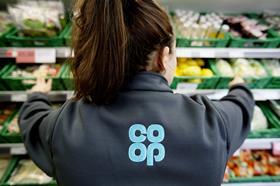
The Co-op is back in the black after posting a £72 million pre-tax surplus in 2017, with improved food sales boosting the retailer’s outlook after a turbulent two years.
Like-for-like sales of its food arm increased by 3.4 per cent, marking four consecutive years of growth for its grocery branch, although revenue remained flat at £7 billion.
The return to profitability was hailed as “progress” by chief executive Steve Murrells, after the group lost £132m in 2016 following the writedown of its stake in the banking arm, which it has since sold.
The Co-op's financial report, released today, affirmed the group’s 2018 strategy to lower food prices through a £50m investment, as well as push ahead with the opening of 100 new stores.
Murrells said: “Today’s results show how much progress we have made. All our businesses have performed well and we have increased profits and reduced debt, while continuing to invest for colleagues, members and customers.
“We are going to deliver more Co-op products and services to more people throughout the country and that is what will really allow us to spread our difference. We know there are challenges ahead, but we are confident that with the support of our colleagues and our members, the strength of our brand and continued investment in our businesses we will achieve our goals.”
In November the Co-op acquired Nisa Retail in a £137.5m deal, as well as agreeing to become exclusive wholesale supplier to Costcutter Supermarkets Group and the 2,200 Costcutter, Mace, Simply Fresh, Supershop and kwiksave convenience stores across its network from spring 2018.
It also embarked on a “Pay in the aisles” pilot, allowing customers to use their smart phones to pay for items as they take them off the shelf. The company says it plans to roll out the technology across UK stores this summer.






No comments yet